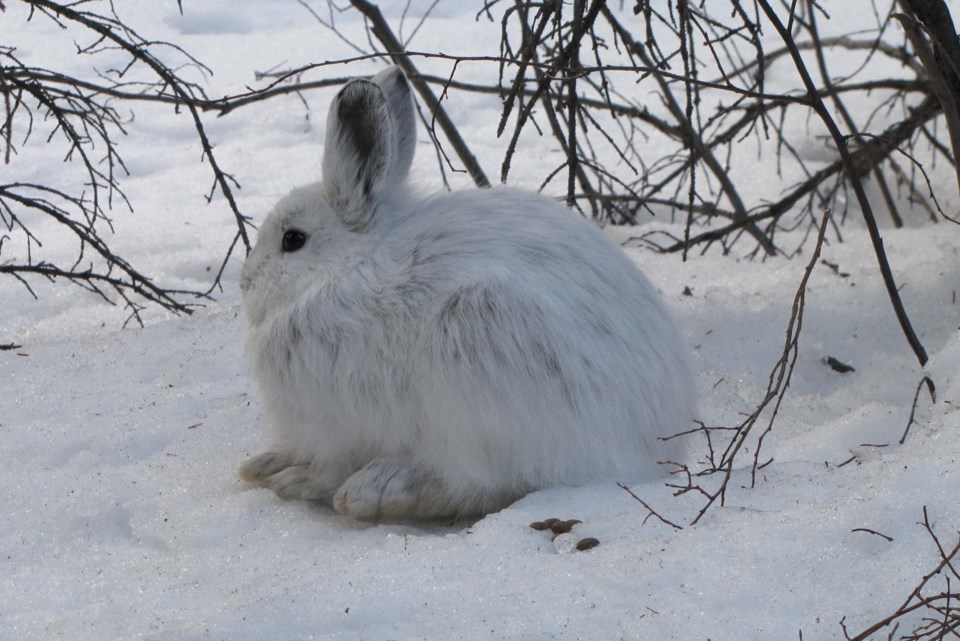Snowshoe hares could soon have a tougher time surviving due to global heating, a new study suggests — and that could have drastic effects on the boreal forest.
University of Florida population ecologist Madan Oli and his team published a study in Proceedings of the Royal Society B: Biological Sciences April 4 on the long-term effects of coat colour on snowshoe hare survival.
Snowshoe hares are found throughout Canada and St. Albert. Much smaller (and arguably cuter) than the white-tailed jackrabbit, snowshoe hares have huge back feet which let them hop atop deep snow, and are typically only found in deep forests.
Snowshoe hares are a major food source for many arctic predators, Oli said.
“They are the keystone herbivore. Everybody eats them.”
Snowshoe hares turn white in the winter and brown in the spring, Oli said. Researchers have long suspected this was done to hide from predators, as white blends in with the winter snow and brown matches the summer dirt. While there have been some short-term studies supporting this theory, no one had done any long-term ones on it.
Climate and colour
Oli and his team analyzed 43 years of data from a long-running project on snowshoe hares in Kluane Lake, Yukon, to test how coat colour affected hare survival. They also tested for the effects of global heating, as the Kluane Lake region warmed by about 0.75 C per decade in those 43 years, resulting in earlier springs, later winters, and less snow.
Charles Kreb, a co-author on Oli’s study and a retired University of British Colombia zoology professor, said he has been working on the Kluane Lake snowshoe hare project since it started in 1976. The project sees researchers use mesh cages baited with apples or alfalfa to catch, tag, and release hares. By recording the colour of each hare and catching them repeatedly over the decades, researchers can correlate survival rates with how well a hare’s coats matches its seasonal surroundings.
Using data from the Kluane project, Oli said his team found that the whitest hares were about 25 per cent more likely to survive the winter than the brownest ones, suggesting that a white coat helped with winter survival. Being white instead of brown come spring did not affect a hare’s chance of surviving until summer.
The team found that snowshoe hares had become less white in the last 40 years in line with the drop in snow cover, with the shift happening faster in the autumn than in the spring.
Krebs said he had yet to see clear evidence of a drop in snowshoe hare survival rates in the Kluane region linked to global heating.
“The hare is outwitting climate change for the moment, but, of course, climate change keeps going,” Krebs said.
Krebs and Oli said it is unclear if snowshoe hares and the 21 other arctic species that change their coats come wintertime will be able to keep up with climate change. If they can’t, the resulting colour mismatch could cause snowshoe hare numbers to crash, with drastic implications for the rest of the boreal forest.
“There’s a whole food web there that’s absolutely critically dependent on the snowshoe hare,” Krebs said, with everything from red squirrels to Canadian lynx eating them.
“You’re going to lose a whole lot of species.”
Oli and Krebs said humans will need to reduce their greenhouse gas emissions if they want to protect snowshoe hares from global heating.



